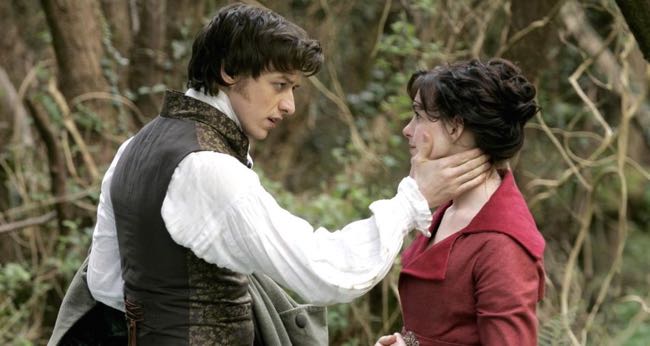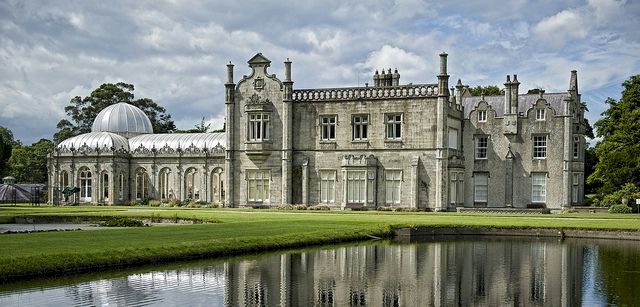By Ray Bennett
Production notes provided by film companies to journalists are often full of bumpf and drivel but the press pack for “Becoming Jane” has lots of good stuff about the movie’s locations.
Julian Jarrold’s film treats Jane Austen as if she were the heroine of one her own stories, telling of her thwarted love for an Irish lawyer named Tom Lefroy. It opened in the U.K. today with a Miramax release set for August in the U.S. It’s great fun with fine performances by Anne Hathaway (“The Devil Wears Prada”) and James McAvoy (“The Last King of Scotland”) as the romantic leads.
It also looks splendid thanks to Eigil Bryld’s cinematography, Eimear Ni Mhaoldhomhnaigh’s costumes and Eve Stewart’s production design. But although the film is set in London and Hampshire where Austen lived with her family in the 18th century, it wasn’t shot in England.
Dublin’s Henrietta Street and King’s Inn provided the Georgian architecture that doubled for Regency London and the gorgeous homes were found in rural Ireland.
For the Austen family home in the village of Steventon, which was a fairly small rectory, production designer Stewart found Higginsbrook House, a private home dating from 1747 near Trim in County Meath. Stewart describes it in the film’s production notes:
“I just wanted something that was of the English style that is quite hard to find in the Irish countryside. That was Higginsbrook. I wanted some place that was suggestive of the Bennet household in ‘Pride and Prejudice.’
“After a lot of research I discovered that the Austens lived in a smaller and shabbier version of the Bennet household. There is a lot of visual evidence, including etchings and paintings of their house that corroborates this.
“The scale of Higginsbrook was ideal because the Austens were crammed into this small house, where Mr. Austen was the lowly rector of a small parish and where they had a small garden to grow all their own food.”
Two buildings were used to create the grand mansion owned by the strict and hectoring Lady Gresham (Maggie Smith) in the film. The exterior is Kilruddery House (below) just outside Bray in County Wicklow, an Elizabethan revival house with handsome gardens and an impressive rear vista.
When visitors to the Gresham ball in the film enter the house through the orangerie they emerge in the interiors of a Gothic Revival home, Charleville Forest 70 miles away in Tullamore, County Offaly.
The grand rotunda in Dublin’s City Hall was the setting for the Gresham ballroom with the church at Cloghlee Bridge in the Dublin hills providing the pulpit for Mr. Austen’s cautionary sermon.
The entrance to Gentleman Jackson’s club was a house on Dublin’s North Great George’s Street but the fimmakers had to look elsewhere for room to stage a boxing match that Lefroy takes part in. Stewart continues:
“At first, we were going to do the boxing match in a Gentleman’s Club but Julian became more interested in the slightly seedy side of Tom Lefroy. Just by chance we had looked at Mother Redcaps tavern, a very large and very old building. We figured it would be much better for a sort of Fight Club than a basement. It was quite dark and otherworldly.
“Jane is more usually described as being a rather prim and austere little spinster with no romance in her life. But her writing reveals that she must have known love. What is interesting is that in a courtroom on Henrietta Street in Dublin we came across Tom Lefroy’s name on a stained glass window. It was a kind of spooky discovery.”


